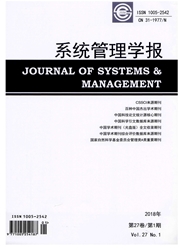

 中文摘要:
中文摘要:
2个相互竞争的制造商通过同一家零售商销售各自的产品,从两种情形分析两制造商的竞争问题。第1种情形,2个制造商只通过制定产品的批发价格来竞争,通过模型计算可以得出两种产品的最优批发价格和最优零售价格,它们都随着顾客对质保期限敏感程度的增强而上升,随着质保期限的延长而上升;并且政府对产品质保期限的规定可能会淘汰劣等产品。第2种情形,2个制造商不仅通过制定产品批发价格而且通过制定产品质保期限来竞争,通过模型计算可以得出两种产品的最优质保期限、最优批发价格和最优零售价格,并且它们都随着顾客对质保期限敏感程度的增强而上升,随着产品自身维修费用的增大而下降。最后,数值试验验证了本文的结论,并研究了质保期限及顾客对质保期限敏感程度对企业利润的影响。
 英文摘要:
英文摘要:
This paper analyzes the competition between two manufacturers, who sell their products through the same retailer. We analyze two scenarios. In the first scenario, the two manufacturers only set the products' wholesale price to compete. Both the optimal wholesale price and the optimal retail price increase as warranty period or customers' sensitivity to warranty period increase. Furthermore, the provisions of the government on warranty period may eliminate inferior products. In the second scenario, the two manufacturers not only set the product's wholesale price but also set the product's warranty period to compete. The optimal warranty period, the optimal wholesale price and the optimal retail price increase with the enhancement of the customers' sensitivity to warranty period, but decrease with the increased cost of repair. Numerical experiments illustrate the research results, and show the impact of warranty period and customers' sensitivity to warranty period on the three company's profits.
 同期刊论文项目
同期刊论文项目
 同项目期刊论文
同项目期刊论文
 期刊信息
期刊信息
